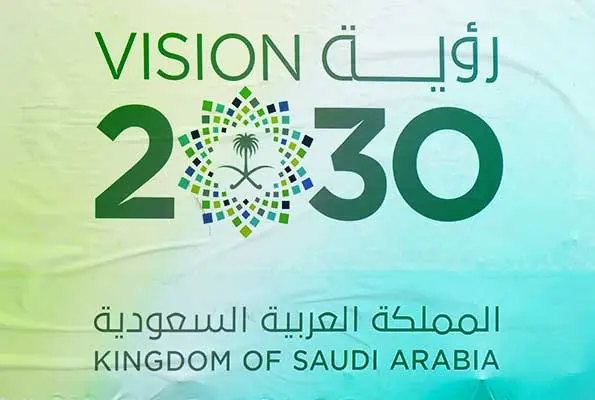Riyadh is spending billions not just on NEOM and AlUla, but on an aggressive institutional effort to digitally archive the entire national memory, a profound exercise in soft state control.
The world watches Saudi Arabia and sees spectacle. There are gargantuan infrastructural projects like the linear city “The Line” or the revived archaeological tourism hub “Al-Ula.” These efforts are attracting global headlines, apart from securing vast budgets, with the end goal of bringing a million visitors by 2030.
They are the loud face of Vision 2030, which is a clear signal of economic diversification and openness. But the genuine engine of this transformation is far quieter and infinitely more sensitive. It’s the wholesale, accelerated digitisation of the nation’s historical memory and cultural fabric.
This is not a project about tourism revenue, as the goal is to define the Kingdom’s national identity. Saudi Arabia intends to create a “Vibrant Society” by rooting modernisation in national pride and traditional values.
If culture is, as the government states, “the mirror of our identity,” then the state must first control the quality and reflection of that mirror. This task requires institutional muscle that reaches far beyond the high-gloss brochures of the giga-projects.
The institutional scaffolding for this digital takeover of history is now firmly in place. The centrepiece is the Cultural Archive Centre (CAC), established in 2021 under the Ministry of Culture. This late-stage establishment demonstrates the accelerated commitment to centralisation. The CAC’s mandate is to inventory, document, and digitally archive all cultural heritage across the Gulf nation. Crucially, its strategic pillars dictate that it will serve as a credible source of knowledge for Saudi heritage.
Historians have previously documented the “archive wars,” where access to records was a persistent and puzzling problem, often controlled by competing factions seeking to enshrine their preferred official narrative.
By funnelling all heritage, physical and documentary, into one centralised digital repository managed by the CAC, the modern state resolves this historical competition. The narrative is standardised, authenticated, and controlled, ensuring the resulting digital memory reflects the selective history required by the modern monarchy.
This digitisation is supported by the National Centre for Archives and Records (NCAR), which professionalises the field on a global stage. The NCAR organises major international events such as the “Archives in the Digital Age” conference to leverage technological advancements and assess global expertise.
Simultaneously, venerable institutions like the “King Abdulaziz Foundation for Research and Archives Darah” continue to strengthen their role in safeguarding documentary heritage and expanding public access through forward-looking digital initiatives. The resulting vast accumulation of knowledge is then disseminated through platforms like the Saudi Digital Library (SDL), the largest source of academic information in the Arab world.
Yet the most strategic effort lies not in scanning official papers, but in capturing the human archive. The Kingdom is quietly moving past mere monuments to digitally catalogue its Intangible Cultural Heritage (ICH), the rich mosaic of dialects, customs, and traditions across its 13 regions.
This is critical for national cohesion. The Ministry of Culture has launched regional projects like the “Al-Ahsa ICH Documentation” initiative, which comprehensively surveys and digitises local oral traditions, performing arts, and craftsmanship skills. Similarly, the “Diriyah Oral History Project” meticulously records the narratives and testimonies of the elderly, specifically including a dedicated “Diriyah Women’s Oral History” component.
The attention to regional and diverse narratives serves a specific political function. It legitimises the modernisation push by showing that the cultural transformation is rooted in a rich, multifaceted, and authenticated history. Technology accelerates this strategic deployment.
Saudi startups are utilising AI to translate and document ancient inscriptions. AI algorithms are also deployed for predictive conservation, monitoring sites and artefacts to pre-empt environmental degradation and optimise preservation efforts.
By embracing digital documentation and deploying interactive technologies like Virtual Reality (VR) and Augmented Reality (AR) in UNESCO-funded partnerships, Saudi Arabia is not just preserving its past; it is actively manufacturing its usable past. The objective is to influence how its history is perceived globally, countering the historical underrepresentation of the Arab region in major documentary heritage indices.
The digitised archive is the foundational asset upon which Vision 2030’s global competitive identity is being built. For the “House of Saud,” the control of memory is paramount. The government is attempting to manage the inherent contradiction of shifting the national image from a conservative religious heartland to a moderate global economic power.
This top-down engineering of identity carries clear political risks, where the historical narrative might prioritise the aesthetics of change over material citizen gains. Nevertheless, the strategy is clear: to successfully transform the future, one must first centrally standardise and irrevocably own the past. This digital memory project is the ultimate act of state sovereignty.



